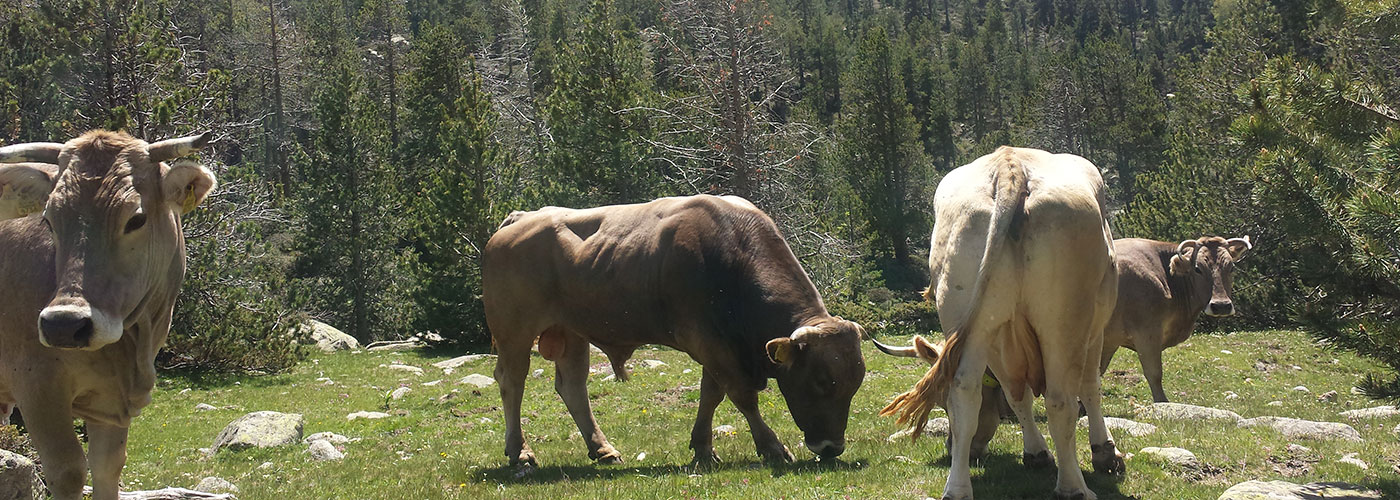
LIVESTOCK
Agriculture and livestock have been the main activities of the Andorran economy and, therefore, of the Madriu-Perafita-Claror Valley. Here, the bottom of the valley was laid out to cultivate agricultural products for both human consumption and for the cattle.
But it is livestock that has left a bigger mark on the Valley, and this thanks to the fact that livestock has been, until the middle of last century, an important source of revenue for the country economy.
The conquest of pastures invisibly drew a number of divisions in the land where exploitation was exercised differently depending on the season. The classification of pastures was established on the basis of the quality of the grass and the time of year when they could be used. There were the “Cortons” (the most apreciated pastures), the “solans” (which could be availed in spring and autumn, and were forbidden to cattle during the summer in order to reserve the grass for the herds coming down from the high pastures) and the “rebaixants” (situated at the bottom of the valley and reserved for early spring and fall, before the herds ride to the high pastures or when they descended from them). They are not directly visible to the naked eye, but these realities are an essential part of the intangible heritage of the valley.
Nowadays, the man continues to use this territory, adapting to the current reality, combining the new requirements (primarily related to leisure activities) with traditional activities. Livestock continues to develop in the Madriu-Perafita-Claror valley, but the trend has been reversed: the most abundant herds are cattle, then horses and since 2015, after a long time, sheep have been raised again in the valley. From a tourism point of view, and we could even say artistic and literary, the presence of livestock in the landscape gives a romantic and pastoral dimension. But above all the cattle that graze in the mountains keeps meadows and open grasslands free from shrubs and colonizing plants, and helps fertilize the soil with their droppings. It also prevents fires by reducing the biomass and prevents the proliferation of wooded areas. It is therefore an essential element in forest management and landscape maintenance.
From the Valley Management Authority we dedicate our efforts to ensure that the presence of livestock in our mountains does not decrease. Its decline would result in irreparable loss of cultural, natural, ecological and social values. With its diversity and quality, these values are part of our heritage, our history and our identity.

